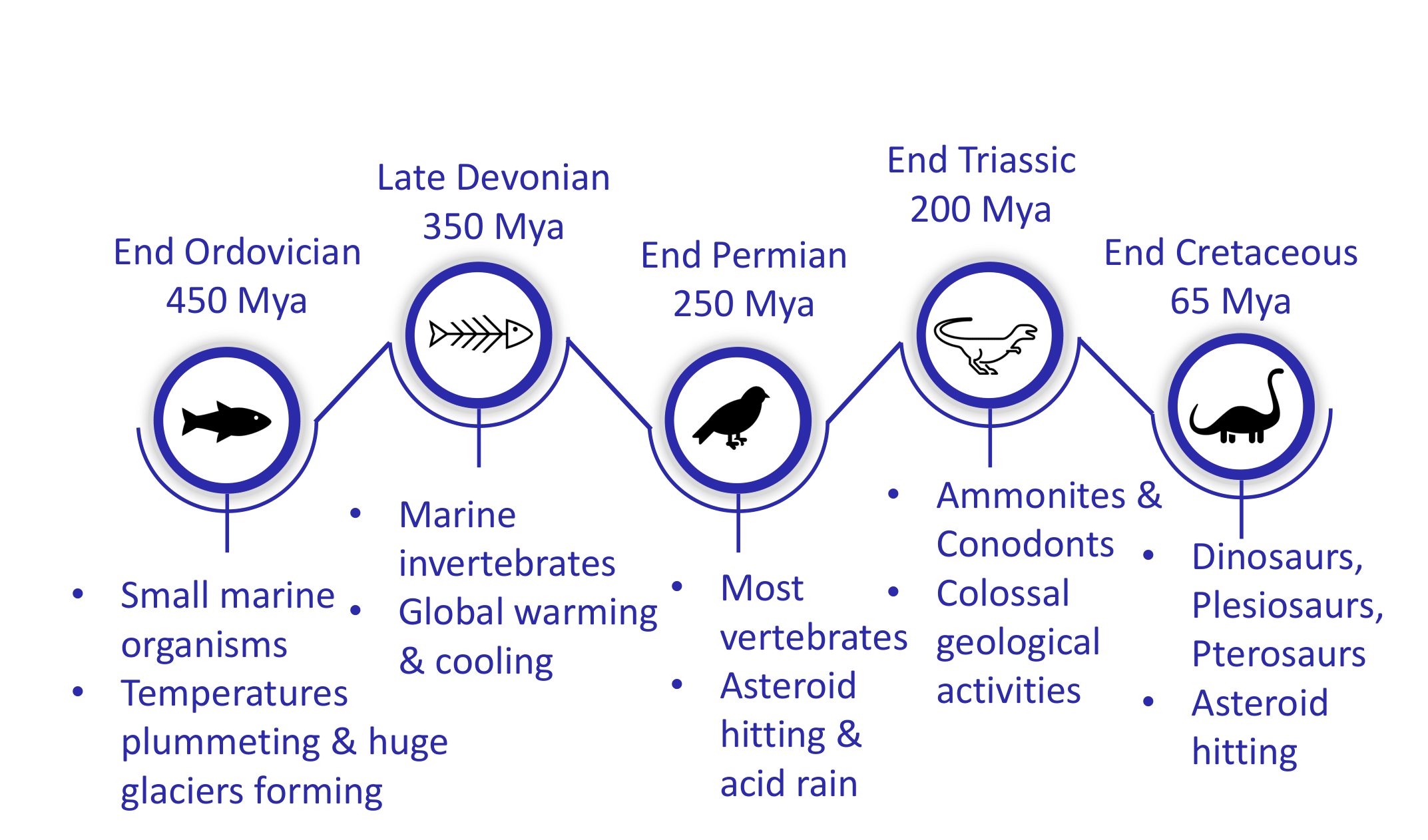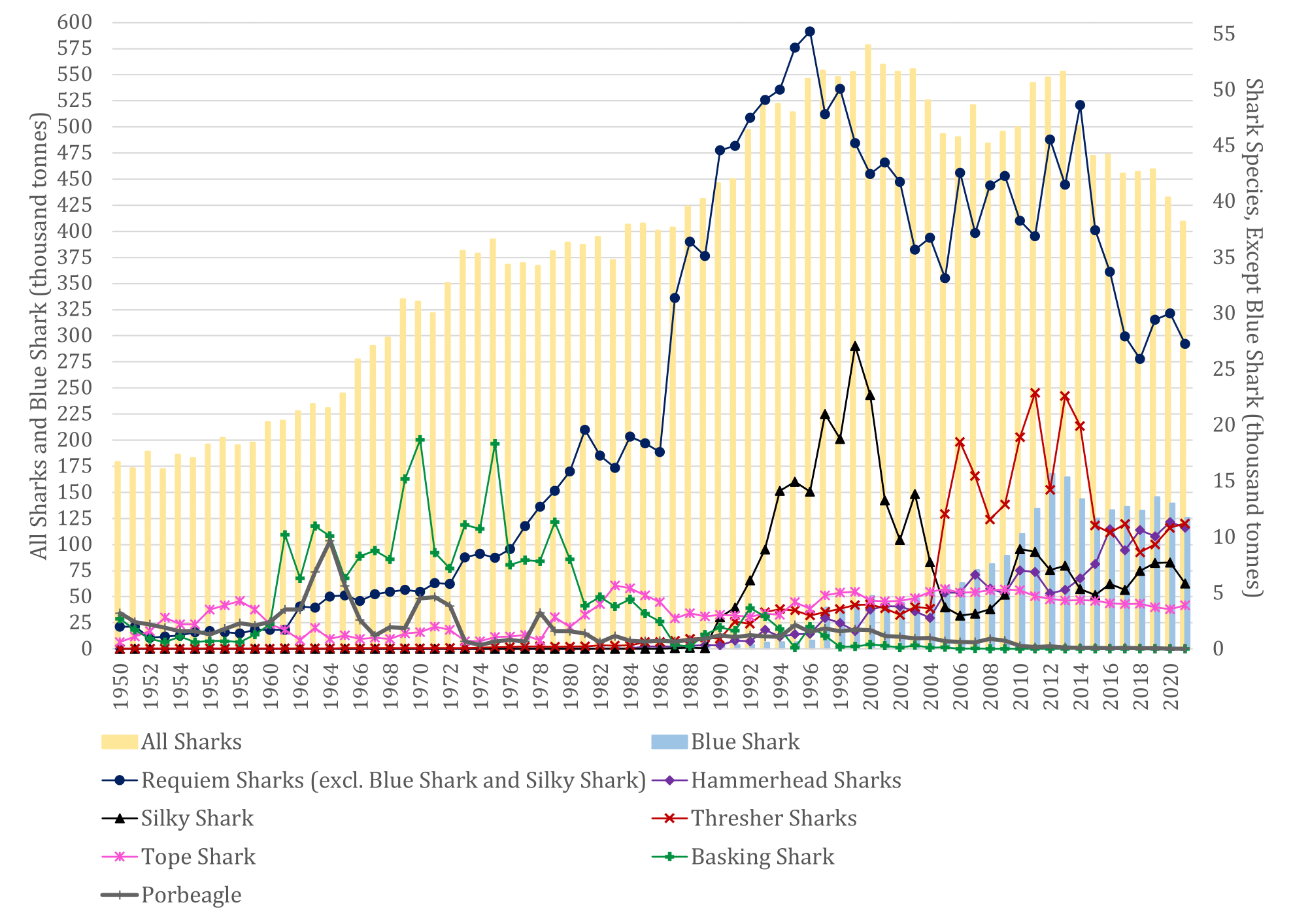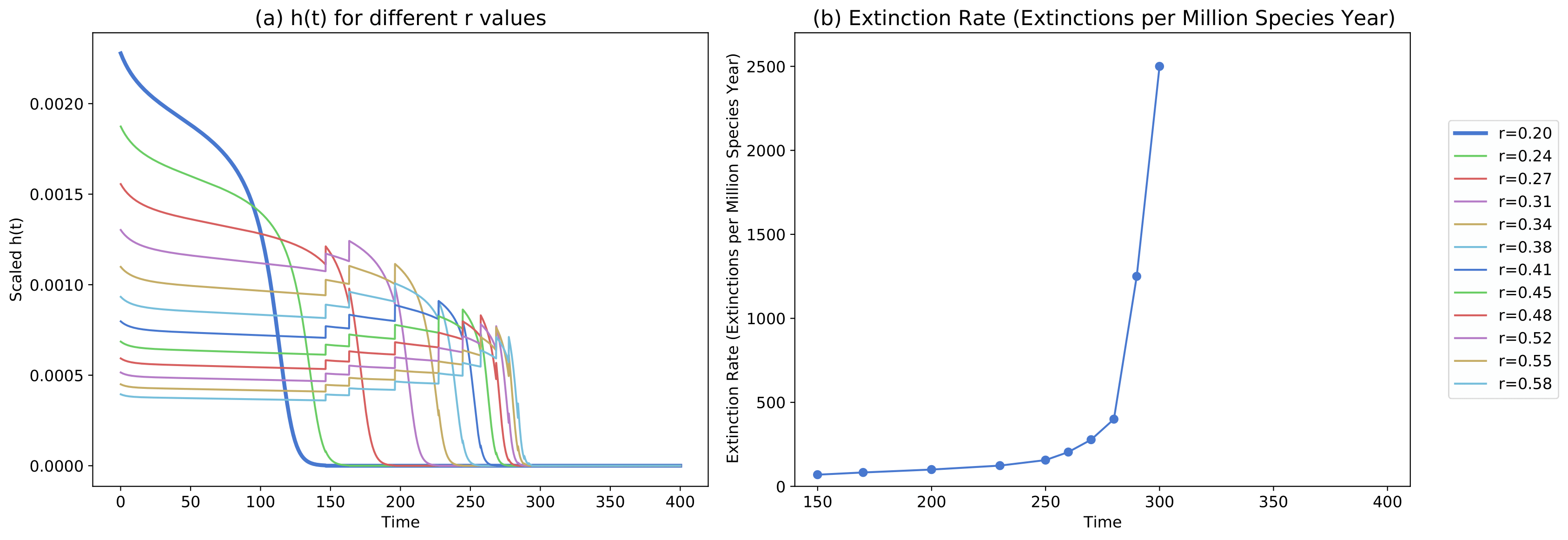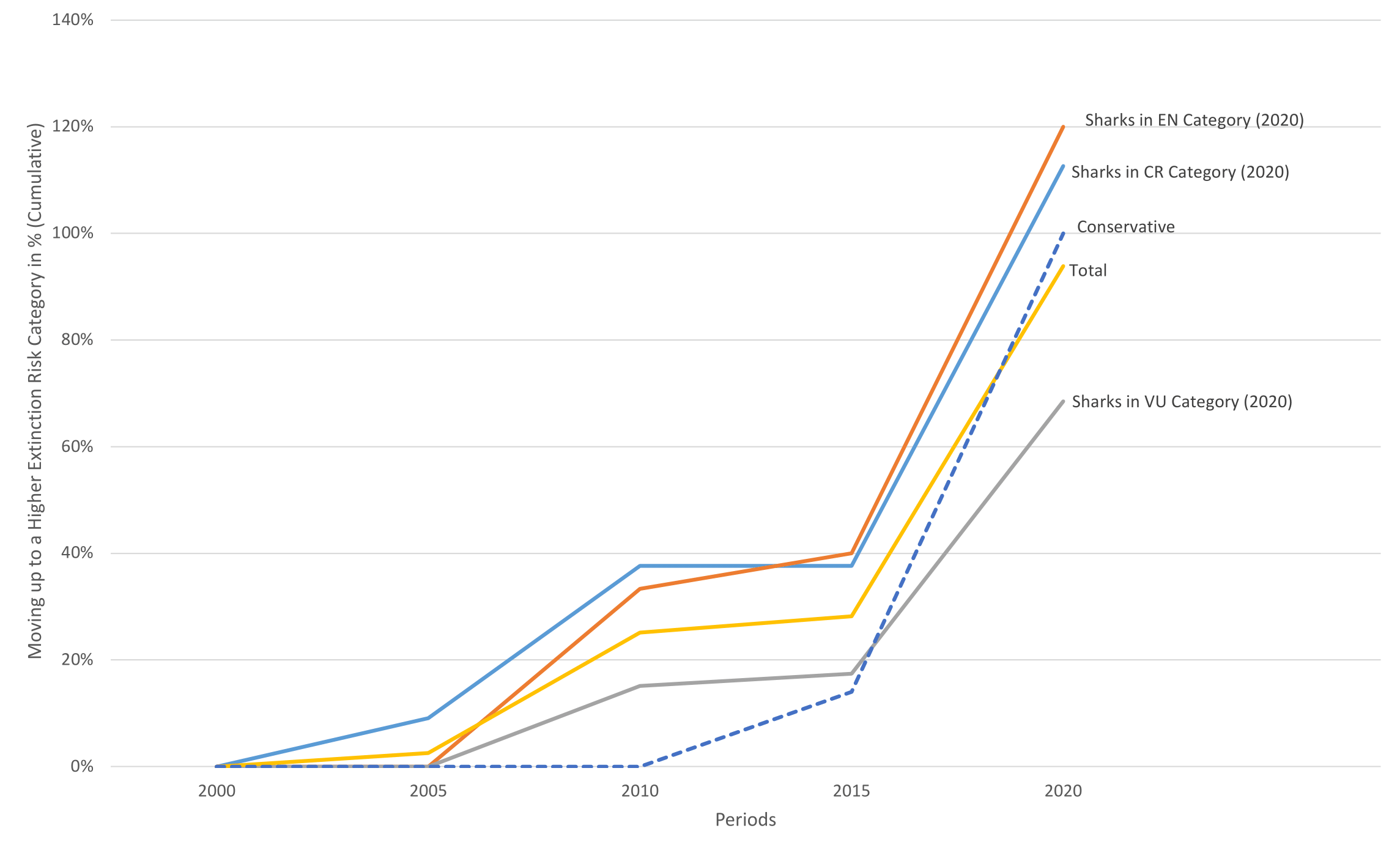
Extinction risks are rising for many species, but policy is slow to react. What are the ingredients to human-made mass extinctions, how may we prevent them?
A healthy biosphere is necessary for human existence on earth, with an important component of this biosphere being the millions of species cohabiting with humans. For much of history, the biosphere and its inhabitants were largely unaffected by our activities, but in the last three centuries the scale of human activity has exploded. Today, human activity touches every corner of the globe and every living organism (Rockström et al. 2009). Perhaps not surprisingly, the world is now entering a biodiversity crisis driven by our expanding footprint, and rapid climate change.
While the extent of this crisis is still unclear, natural scientists have argued the world is already entering its Sixth Mass Extinction event: the first one caused by humans. To examine its likelihood, we explore the driving forces behind human-driven extinctions in our research (Taylor and Weder 2024).
How do extinctions impact humans?
Extinctions are natural events, and evolution relies on their work to winnow and reward successful variants. Human-driven extinctions are, however, different and potentially very costly. Economists have just started to account for these costs by valuing the diverse ecosystem services nature provides. These services include the sanitation services provided by vultures (Frank and Sudarshan 2024); the highway safety benefits of wolves (Raynor et al. 2021); the sequestration services provided by a healthy marine web anchored by sharks (Heithaus et al. 2014) or the benefits of biological pest control by bats on the health of children (Frank 2024).
What are mass extinctions?
Far from these cases of local or singular extinction are events so large as to be labeled mass extinctions. Luckily, these are rare events, with only five occurring in the past 500 million years (see Figure 1). Although definitions differ, a common metric for a mass extinction event is that 75% or more of living species go extinct in a geologically short period of time (a few million years). Naturally, none of these previous events came as a result of human intervention. They were driven, instead, by relatively slow-moving earth processes - climate warming or cooling, or sporadic asteroid strikes. What is different about today’s biodiversity crisis is that the expansion of human activity has grown extremely rapidly, creating a shock to the world’s biosphere, which may be magnifying already existing, but relatively slow-moving, habitat destruction caused by climate change.
Figure 1: The Five Mass Extinctions

Source: Taylor and Weder (2024, p. 238), based on Barnosky et al. (2011)
How global trade may rapidly destroy populations
Human interventions have immediate impacts on populations. The millions of Plains Bison in North America were almost completely wiped out in a little less than ten years with their hides being exported to Europe (Taylor 2011). Millions of vultures, across the entire Indian sub-continent, were driven to near extinction in the mid-1990s by inadvertent poisoning (Frank and Sudarshan 2024). Today, perhaps 100 million sharks are slaughtered yearly for the shark fin trade to a few Asian countries (Dent and Clarke 2015, Erhardt and Weder 2020). Human impacts are no longer local nor slow-moving; they are global, rapid, and often completely unregulated.
Recent evidence for these rapid impacts is shown in Figure 2. It documents shark captures worldwide since 1950. The figure shows a repeated sequence of increased harvest, peak harvest, and then decline for individual shark species over time. The picture is indicative of a pattern where humans drive one shark species after another to the brink of extinction. This pattern of sequential depletion is obscured by the rising and relatively stable aggregate catch figures, making calls for a moratorium or ban on shark killing look premature.
Figure 2: World capture of shark populations

Source: Taylor and Weder (2024, p. 247), with data from the Food and Agriculture Organization (www.fao.org/fishery/statistics/software/fishstatj/en). Notes: The left-hand axis measures capture of all sharks (tall, yellow bars) and blue sharks (small, blue bars). The righthand axis applies to specific species of sharks, often showing a pattern of rising and then falling capture.
What are the precursors to a mass extinction event?
Given the rarity of mass extinction events, it is unclear whether today’s new pressures on the biosphere will usher in a Sixth Mass Extinction. While natural scientists have documented increasing rates of extinction for several classes of species (Ceballos et al. 2015, Ceballos et al. 2020), a key question remains: how would this process unfold?
In Taylor and Weder (2024), we show how conventional market forces leading to overharvesting can combine with the slow habitat degradation created by climate change to usher in a mass extinction event. Overharvesting can of course, by itself, create extinctions as witnessed by many events in both prehistory (Polynesian and Paleolithic extinctions) and historic times (Buffalo, passenger pigeon), but these are singular events and not mass extinctions. Climate change can drive extinction events, but even today’s relatively rapid climate change is slow, measured on a human scale (less than 1.5 C in the last 200 years).
We find the key to generating a mass extinction is to combine these processes. Over-harvesting by itself tends to be species-specific, but if depletion of one supply source creates an unfilled demand that is supplied by exploiting other sources, then over time demand is concentrated on fewer and fewer sources of supply. Demand concentration by itself can usher in a process of sequential extinction just as one domino falling creates the preconditions for another. These pressures have already been documented in global fisheries where fishing through the food chain (or web) is routinely observed (Pauly et al. 1998) and this process may be at play in Figure 2.
But shifting to smaller (and lower trophic) species tends to slow down the pace of extinctions because of their relatively rapid natural growth. This is where climate change comes in. Climate change alters and, in some cases, destroys natural habitats making all species more vulnerable to shocks. As a result, we find even slow-moving climate change removes this natural check on a path of rapid and sequential mass extinction.
Climate change and human depletion lead to an accelerating sequential extinction
In Figure 3, we plot the results of a simulation where both demand pressures and ongoing climate change together generate a mass extinction event. The left panel plots the harvest rates (h) for 12 species, which only differ in their rate of reproduction (r). Demand is evenly split across the species to start, but this is sufficient to drive the first slowest growing species to extinction, shown by the bold (blue) line, starting at the top of the vertical axis; this in turn concentrates demand on those remaining. Initially, demand concentration is relatively weak, creating an imperceptible impact on the remaining harvests, but with further extinctions, its strength grows, driving even the fastest-growing species to extinction.
Figure 3: Concentrated demand, habitat loss, and mass extinction

Source: Taylor and Weder (2024, p. 251)
To capture the compression of these extinctions over time, in the second panel we plot a common measure of the extinction rate against time (extinctions per million species year). Each dot represents a measure of the extinction rate at that point in time. Joining them together shows this measure rises only slowly at first, but as demand is concentrated and habitats are degraded the process accelerates ending with a telltale spike in extinctions which we might associate with a mass extinction event.
Therefore, the rapid rise in humans’ ability to take from nature combined with a relatively slow impact of climate change, degrading habitats, generates a novel result - a mass extinction caused by Homo sapiens. We show in Taylor and Weder (2024) that several hundred shark species, within the Chondrichthyes class, may be on such a path. For the 150 shark species in the high extinction-risk categories assessed by the International Union for the Conservation of Nature (IUCN), we find evidence that species "graduate" to higher and higher categories of depletion reflecting an increasing and accelerating risk of extinction over time (see Figure 4). This finding reflects, at least partly, the ongoing demand pressures shown by the captures in Figure 3 (see Dulvy et al. 2024 for an assessment of the increasing risk of sharks and rays).
Figure 4: Increasing risks of extinction for sharks

Source: Taylor and Weder (2024, p. 255) with data from the IUCN Red List (https://www.iucnredlist.org/). Notes: VU stands for Vulnerable, EN for Endangered, and CR for Critically Endangered. “Total” shows all shark species in the database, and “Conservative” is based on a conservative IUCN methodology of reassessments.
A proactive plan to preserve biodiversity
Our work shows a possible path to mass extinction, but it is not pre-destined. Human beings have the ability to slow climate change and could put in place buffers to contain the rate of current extinctions. But any successful policy must come to grips with three challenges.
Because extinction is irreversible, conservation policies must be proactive and forward- looking. Since species cross borders and demand for their derived products is global, these policies must be global in reach. And finally, policies need to be coordinated across countries because failure to coordinate species protections will generate strong incentives for free riding.
Fortunately, we already have in place the Convention on International Trade in Endangered Species of Wild Fauna and Flora (CITES) which is the oldest environmental treaty in existence (CITES 2022). This treaty commits signatories to reporting, limiting or sanctioning international trade in the products of species thought to be at risk of extinction. The treaty established a set of appendices which contain species whose trade is recorded (appendix III), regulated (annex II), or completely restricted (annex I). While CITES is by most accounts a conservation success story, it is not proactive in nature and critics of the treaty cite the long-time lag between an observed decline in species populations and its subsequent listing on CITES appendices.
A radical solution to save endangered species: Automatic listing in CITES appendices
Our solution to this problem is simple but radical. Take the listing decision out of the hands of individual countries’ governments and place it firmly in the hands of the scientific community. IUCN has for many years produced species listings based on the threat of extinction with their Red List being the most well known. These listings underlie our Figure 4. If the inclusion of species on CITES appendices was determined by the IUCN listings rather than political wrangling within CITES meetings, the time lag between recognition of a risk and response to it would be far shorter. For example, a simple mapping from an IUCN Critically Endangered or Endangered determination to a CITES appendix I or II designations might suffice.
Doing so would, however, involve a radical shift in the property rights over biodiversity, because automatic listing implies that CITES members need to debate and then vote on deletions or special exceptions from the appendices, rather than inclusions. By making a listing decision automatic we are altering the status quo. Every at-risk species would be given rapid protection and demands for special exemptions and exclusions would be visible to the public, to nongovernmental organisations and to other member countries. But if the world’s wealth of biological diversity is truly an inheritance we hold for future generations, then shouldn’t actions which put this wealth at risk be visible to us all?
References
Barnosky A D, N Matzke, S Tomiya, G O Wogan, B Swartz, T B Quental, C Marshall, J L McGuire, E L Lindsey, K C Maguire, et al. (2011), "Has the Earth’s sixth mass extinction already arrived?" Nature 471(7336): 51–57.
Ceballos G, P R Ehrlich, and P H Raven (2020), "Vertebrates on the brink as indicators of biological annihilation and the sixth mass extinction," Proceedings of the National Academy of Sciences 117(24): 13596–13602.
Ceballos G, P R Ehrlich, A D Barnosky, A García, R M Pringle, and T M Palmer (2015), "Accelerated modern human–induced species losses: Entering the sixth mass extinction," Science Advances 1(5): e1400253.
Dent F, and S Clarke (2015), "State of the Global Market for Shark Products," FAO Fisheries and Aquaculture Technical Paper No. 590, Rome: FAO.
CITES (2022), "A Guide to the CoP Decision-Making Process," CITES CoP 19 Guide.
Dulvy N K, N Pacoureau, J H Matsushiba, H F Yan, W J Vanderwright, C L Rigby, B Finucci, C S Shemann, R W Jabado, and C A Simpfendorfer (2024), "Ecological erosion and expanding extinction risk of sharks and rays," Science 386(6726): 1–10.
Erhardt T, and R Weder (2020), "Shark hunting: On the vulnerability of resources with heterogeneous species," Resource and Energy Economics 61(4): 101181.
Frank E G (2024), "The economic impacts of ecosystem disruptions: Costs from substituting biological pest control," Science 386(adg0344): 1–6.
Frank E, and A Sudarshan (2024), "The social costs of keystone species collapse: Evidence from the decline of vultures in India," American Economic Review 114(10): 3007–3040.
Heithaus M R, T Alcoverro, R Arthur, D A Burkholder, K A Coates, M J A Christianen, N Kelkar, S A Manuel, A J Wirsing, and W J Kenworthy, et al. (2014), "Seagrasses in the age of sea turtle conservation and shark overfishing," Frontiers in Marine Science 1: 28.
Pauly D, V Christensen, J Dalsgaard, R Froese, and F Torres Jr. (1998), "Fishing down marine food webs," Science 279(5352): 860–863.
Raynor J L, C A Grainger, and D P Parker (2021), "Wolves make roadways safer, generating large economic returns to predator conservation," Proceedings of the National Academy of Sciences 118(22): e2023251118.
Rockström J, W Steffen, K Noone, Å Persson, F S Chapin III, E Lambin, T M Lenton, M Scheffer, C Folke, and H J Schellnhuber, et al. (2009), "Planetary boundaries: Exploring the safe operating space for humanity," Ecology and Society 14(2).
Taylor M S (2011), "Buffalo hunt: International trade and the virtual extinction of the North American bison," American Economic Review 101(7): 3162–3195.
Taylor M S, and R Weder (2024), "On the economics of extinction and possible mass extinctions," Journal of Economic Perspectives 38(3): 237–260. https://doi.org/10.1257/jep.38.3.237


